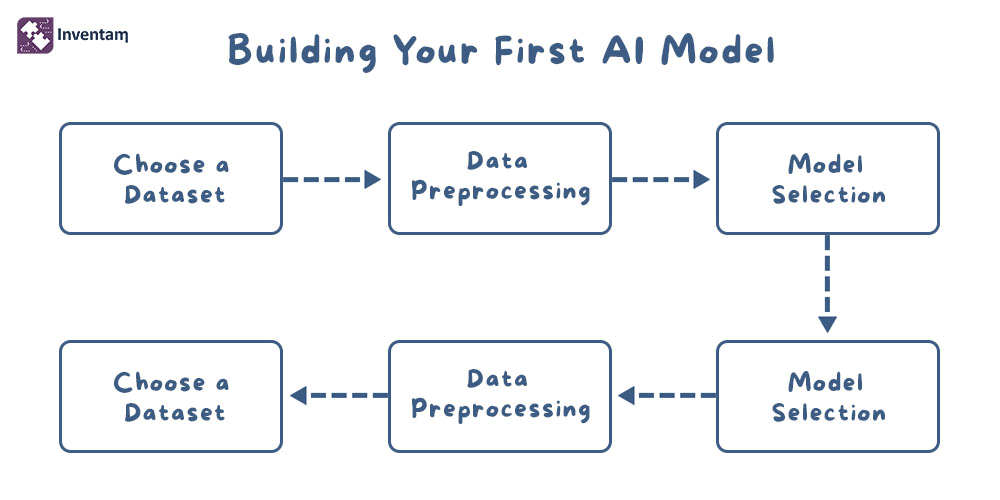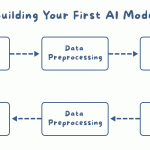AI Programming: Your Comprehensive Guide to Building Intelligent Systems
Introduction to AI Programming: Harnessing the Power of Artificial Intelligence
In today’s rapidly evolving technological landscape, AI programming has emerged as a revolutionary force, transforming industries and shaping the future of innovation. If you’re captivated by the prospect of creating intelligent solutions that drive real-world impact, this comprehensive guide will equip you with a foundational understanding of AI programming and guide you through the process of building your first AI model.
Demystifying the Fundamentals of AI: Embarking on Your AI Programming Journey
Before delving into the intricacies of AI programming, it’s essential to grasp the core principles that underpin this transformative field:
- Machine Learning (ML): ML empowers computers to learn from data without explicit programming, enabling them to identify patterns, make predictions, and adapt to changing environments.
- Deep Learning (DL): A subset of ML, DL utilizes artificial neural networks (ANNs), inspired by the human brain, to tackle complex problems like image and speech recognition, natural language processing, and predictive analytics.
- Neural Networks (NNs): NNs are interconnected layers of algorithms that process and analyze data, mimicking the structure and function of the human brain. These networks can learn from vast amounts of data, making them well-suited for complex AI tasks.
Exploring the Diverse Landscape of AI Algorithms: Unleashing the Power of AI
The world of AI programming encompasses a variety of algorithms, each tailored to specific applications and problem types:
- Supervised Learning (SL): SL algorithms learn from labeled data, mapping inputs to desired outputs. Common examples include linear regression, logistic regression, and decision trees.
- Unsupervised Learning (USL): USL algorithms uncover hidden patterns in unlabeled data, often used for tasks like data clustering, customer segmentation, and anomaly detection.
- Reinforcement Learning (RL): RL algorithms learn through trial and error, interacting with an environment to maximize rewards. This approach is particularly useful for solving complex sequential decision-making problems.
Harnessing the Power of Tools and Languages: Your AI Programming Toolkit
To embark on your AI programming journey, you’ll need the right tools and languages to support your endeavors:
- Python: Python is a versatile and popular language for AI programming, offering a rich ecosystem of libraries like scikit-learn, TensorFlow, and PyTorch.
- R: R is another powerful language for data analysis and ML, with packages like caret, RWeka, and dplyr.
- AI Toolkits: Specialized toolkits like TensorFlow, PyTorch, and MXNet provide optimized frameworks for building and training AI models, accelerating your development process.
Building Your First AI Model: A Hands-on Approach to AI Programming
Now, let’s put theory into practice by creating your first AI model using Python and scikit-learn:
- Choose a Dataset: Select a dataset, such as the Iris flower dataset, that contains labeled data relevant to your problem.
- Data Preprocessing: Clean and prepare your data, handling missing values, converting categorical variables, and scaling numerical data.
- Model Selection: Choose an appropriate ML algorithm based on your problem type. For instance, linear regression is suitable for predicting continuous values, while logistic regression is effective for binary classification tasks.
- Model Training: Train your model using the prepared data, allowing it to learn the patterns and relationships within the data.
- Model Evaluation: Evaluate your model’s performance using metrics like accuracy, precision, recall, or F1-score, ensuring it meets your expectations.
- Model Deployment: Deploy your trained model to make predictions on new, unseen data, serving as the foundation for your AI-powered application.
Ethical Considerations in AI Programming: Responsible AI Development
As AI becomes more pervasive, ethical considerations must be at the forefront of AI development to ensure responsible and trustworthy AI applications:
- Bias: AI models can perpetuate biases present in the data used to train them. It’s crucial to carefully select and curate data sets to minimize bias and ensure fairness in AI-driven decisions.
- Fairness: AI decisions should be fair and unbiased, avoiding discrimination based on race, gender, age, or other protected characteristics. Regular audits and monitoring of AI systems are essential to identify and address potential biases.
- Transparency: AI systems should be transparent, allowing for understanding and accountability. Explainable AI techniques can help users comprehend how AI models make decisions, fostering trust and confidence.
- Privacy: AI applications must respect and protect individual privacy. Data collection, storage, and usage practices should be transparent and compliant with data privacy regulations.
- Accountability: Developers and deployers of AI systems must be held accountable for their creations. Clear guidelines and regulations are needed to establish accountability and ensure responsible AI development.
Empower Your Business with Inventam Tech Solutions’ AI Expertise
Inventam Tech Solutions (OPC) Pvt Ltd, a leading provider of AI development services, is your trusted partner in creating intelligent solutions tailored to your specific needs. Our team of experienced AI specialists possesses a deep understanding of cutting-edge AI technologies and methodologies. We collaborate closely with our clients to understand their unique challenges and aspirations, ensuring that our AI solutions are aligned with their business objectives.
We offer a comprehensive range of AI development services, including: Consulting and strategy development AI integration with existing systems AI deployment and maintenance Partner with Inventam Tech Solutions and unlock the potential of AI to transform your business.
Contact us today for a free consultation.













